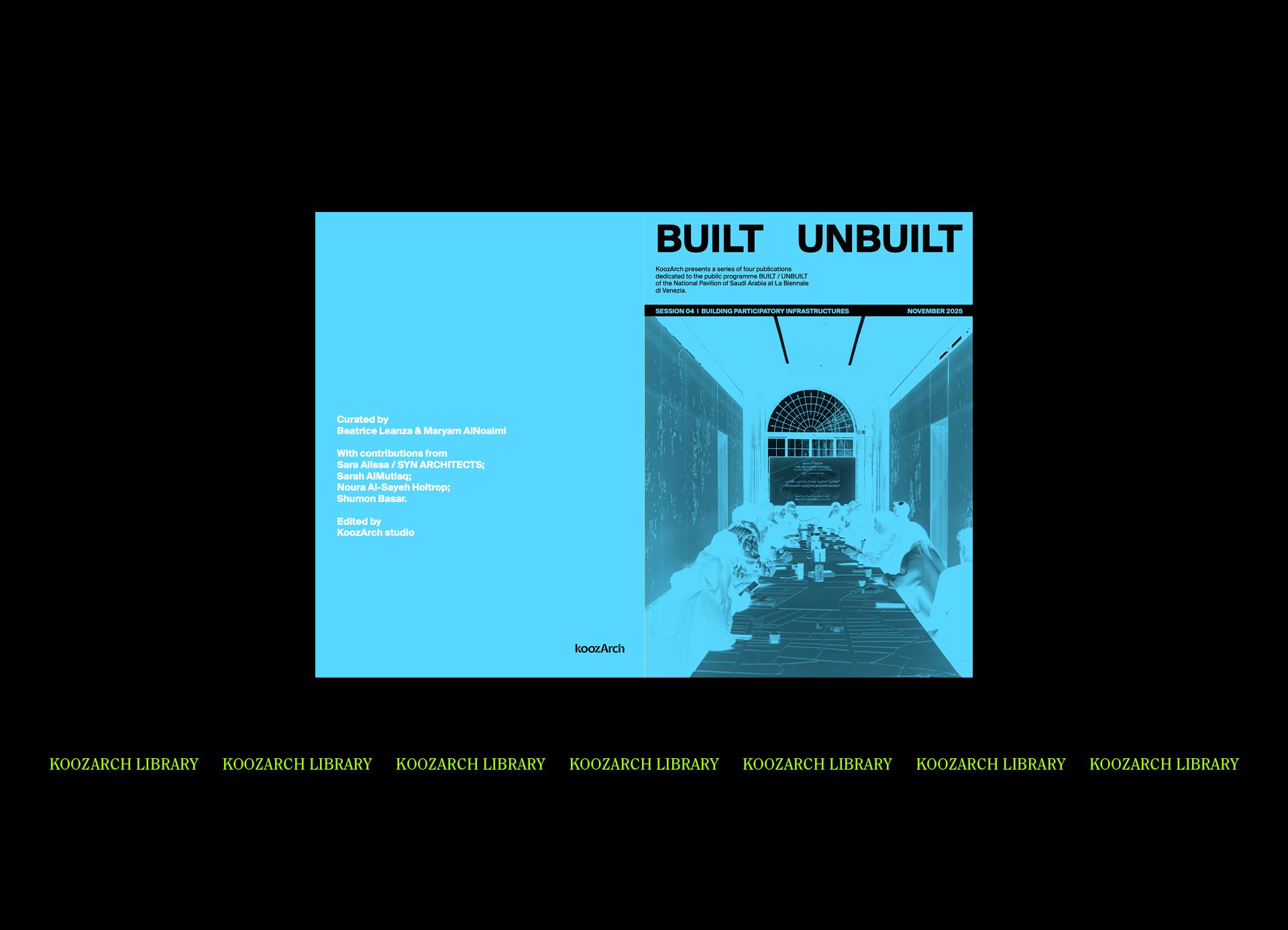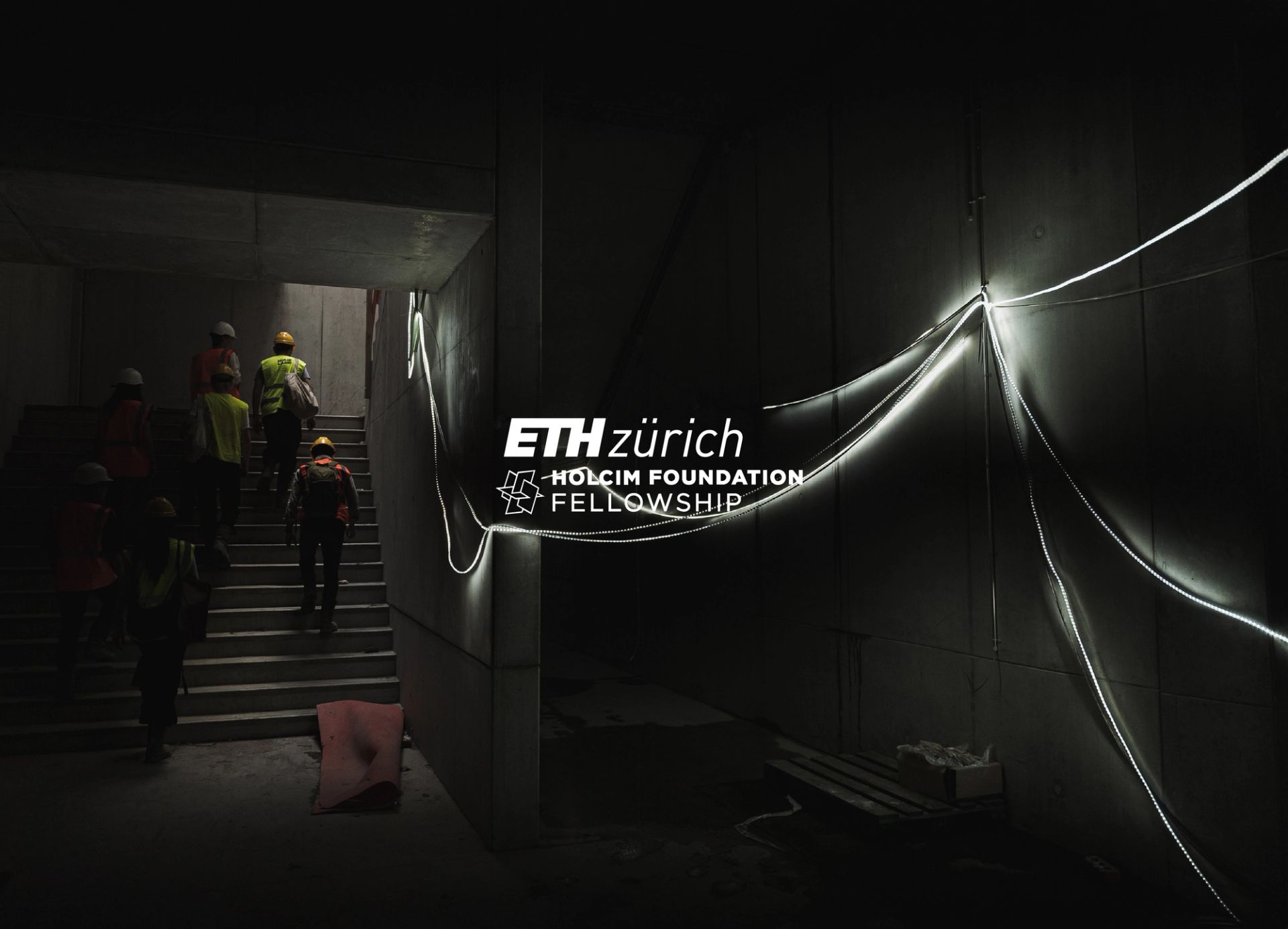Guerilla Architects is a multi-disciplinary artist collective based in Berlin who embrace a “guerrilla” approach to spatial interventions and socio-critical art projects. Working within existing structures, with the ambition of giving new meaning to formerly invisible spaces, the collective draws “on the untapped potential of political, legal and spatial grey zones as well as the free resources which are available due to the abundance and overproduction of urban society.” In this conversation with the team, we explore their efforts to change our collective perspective on the built space to open a discussion that goes far beyond the physical urban environment and the alleged role of our profession as architects.
KOOZ Could you start by introducing us to your collective and your “guerrilla” approach to our built environment?
GA Guerilla Architects is a multi-disciplinary artist collective based in Berlin. We draw on the untapped potential of political, legal and spatial grey zones as well as the free resources which are available due to the abundance and overproduction of urban society. Being “guerilla” represents our approach to urban development, while focusing on spatial interventions and socio-critical art projects. This means that great value is not necessarily only created by building on a grand scale. On the contrary, by working with existing structures, it often only requires minimally invasive interventions in order to give new meaning to former invisible spaces.
Great value is not necessarily only created by building on a grand scale. By working with existing structures, it often only requires minimally invasive interventions to give new meaning to former invisible spaces.
KOOZ Your work is frequently referred to as “spatial activism” and “performative urbanism”. How and to what extent do you identify your approach in these terms? What role do activism and performance hold within your approach?
GA As a critical spatial praxis we work cooperatively, research-based and site-specific. Special regard is placed on social and environmental sustainability. Believing in the performative potential of architecture that can moderate diverging interests in open processes of design forms our shared creative basis. Furthermore, the active involvement in the socio-spatial development of our own living and working environment is an important source of inspiration. We understand our work in the collective as an interplay of “body and space”.
Coming from architecture, the preoccupation with the “spirit of the place” (notably studied by Norbert-Schulz) and the spatial potentials of specific contexts is always in the focus of our work.
In order to make these potentials visible, we need performative means: through our own physical experience of specific spaces, we develop spontaneous actions and site-specific performative installations, which in turn enable other people to perceive the built space in a new way and invite the spontaneously emerging audience to become an active part of their own everyday living environment.
Believing in the performative potential of architecture that can moderate diverging interests in open processes of design forms our shared creative basis.
KOOZ Specifically, you “draw on the untapped potential of political, legal und spatial grey zones” and “work with minimally invasive interventions to give new meaning to former invisible spaces”. What do you define as invisible spaces? What is the value in operating with the un-built to shape a more socially and environmentally sustainable built environment?
GA Since our first project in 2012 in London we have dealt with the idea of “invisible space”. Back then we squatted an old Victorian warehouse, left vacant for over 25 years due to real estate speculation. This property was one of the many left vacant. About 72.000 properties formed a “Hidden Borough” of assets waiting to be re-developed. Most of them were forgotten places, erased from the mental maps of their neighbourhoods. No one ever knocked on the doors or looked through the windows to see if anyone still lived there. To highlight the dilemma of these vacancies, we pasted posters of blue doors in a 1:1 format on them for people to see this “Hidden Borough” again. This was our first intervention in breaking professional boundaries of architecture and merging them with activism and performance. Since then, we have been working with different methods of artistic research, translating them into installations and performances on urban issues. Looking for ways to change our collective perspective on the built space, we open a discussion and a debate that goes far beyond the physical urban environment and the alleged role of our profession as architects.
Looking for ways to change our collective perspective on the built space, we open a discussion and a debate that goes far beyond the physical urban environment and the alleged role of our profession as architects.
KOOZ Sited in Berlin, how and in what ways has the city shaped your discourse and research?
GA Ten years after our foundation we realised that real estate speculation is a jarringly visible thread of the housing crisis in Berlin. More and more houses are taken off the real estate market – mainly the housing market – and find themselves as assets i.e, capital investments in the financial market. These properties’ facades suggest that they are still part of existing neighbourhoods and form a hidden borough of profit-oriented capital investments, whose exclusivity and constantly rising rents have long since made them unaffordable for local residents. Simultaneously this became more and more the focus of our work as a collective. Berlin has not yet lost the battle against the financialization of the real estate market. We see it as our duty as city makers to research the ownership structures of our neighbourhoods and make them visible.
Berlin has not yet lost the battle against the financialization of the real estate market. We see it as our duty as city makers to research the ownership structures of our neighbourhoods and make them visible.
KOOZ Beyond the collective, Guerilla Architects also engages with a wider network of individuals to enable an open process-based design. With what other disciplines / professions do you engage with? How does this wider multidisciplinary pool of thinkers inform your strategies and outputs on and around the city?
GA Collaborating with different professionals such as directors, dramaturgs, performers, photographers, musicians and so on is fundamental to convey the content of our research and bring it to the public through told stories. The “audience” is also the community we find on site, which we become part of during our work. Neighbours, workers, passers-by or city dwellers are experts that look at the city through their own specific lens, we learn from them how to perceive the city from their perspective in an ever-changing exchange of knowledge. It is fascinating to learn from other disciplines and experts how to bring complex ensembles of research and ideas to their core and thereby make it possible to be communicated to others.
We question the established processes of city development, its rigid structures, its hierarchies and we believe in the potential of artistic research to be recognized as an official tool for city development.
KOOZ What are your objectives on the long run? How do you imagine scaling up your project so as to also expand beyond the context of Berlin to other European / international metropolis?
GA We see city making as an interdisciplinary action of different actors. For this reason, we are engaged in the establishment of the Urbane Praxis Berlin as a new sector in Berlin’s cultural and funding landscape. Urbane Praxis is an artistic action of all disciplines in relation to the city, in the dimensions of the social, the spatial, educational and the invention of possible futures. Thinking global and acting local is the roadmap for our artistic work in Berlin, and so is a fundamental element of the Urbane Praxis: the connection, exchange and collaboration with national and international networks of urban practitioners. We question the established processes of city development, its rigid structures, its hierarchies and we believe in the potential of artistic research to be recognized as an official tool for city development.
Bio
Guerilla Architects is an artist collective based in Berlin. The collective was founded in 2012 in the course of a squatting experience in London during which they explored the grey zones of the local real estate market through performances in public space. By focusing their work on spatial interventions and socio-critical art projects, they approach urban development by being "guerilla". This means that great value is not necessarily only created by building on a grand scale. The collective works cooperatively, research-based and site-specific as a critical spatial praxis with a special regard placed on social and environmental sustainability. Their work can also be described as “spatial activism” or “performative urbanism”. Its long-term goal is to directly influence urban political processes through artistic and performative interventions.
Federica Zambeletti is the founder and managing director of KoozArch. She is an architect, researcher and digital curator whose interests lie at the intersection between art, architecture and regenerative practices. In 2015 Federica founded KoozArch with the ambition of creating a space where to research, explore and discuss architecture beyond the limits of its built form. Parallel to her work at KoozArch, Federica is Architect at the architecture studio UNA and researcher at the non-profit agency for change UNLESS where she is project manager of the research "Antarctic Resolution". Federica is an Architectural Association School of Architecture in London alumni.





